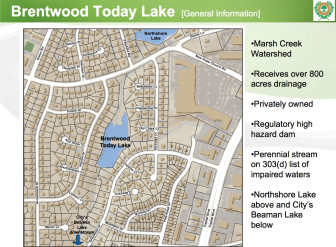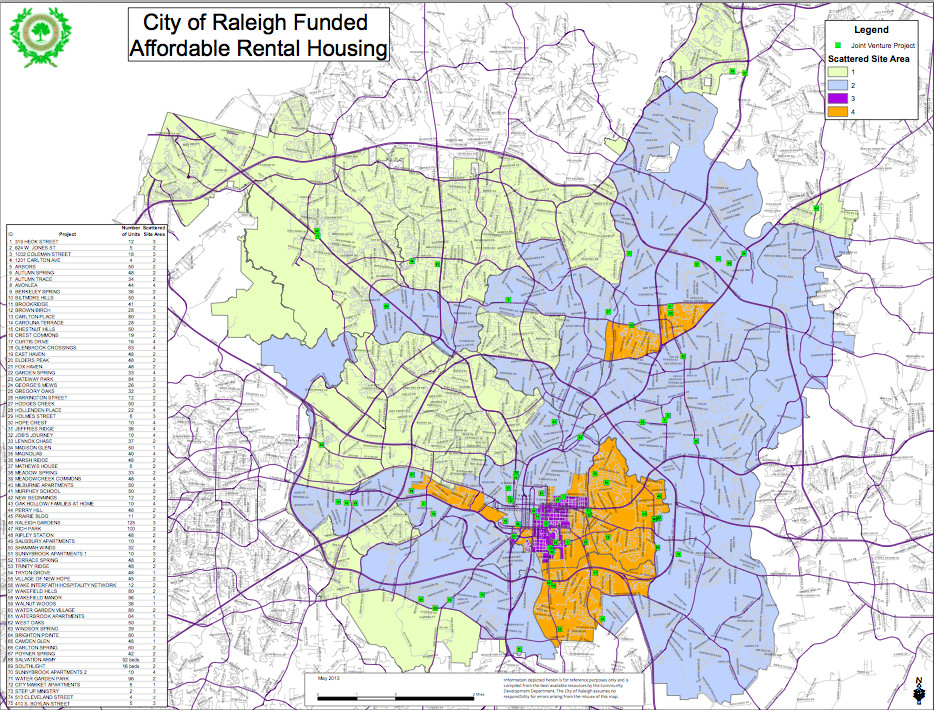Under former Mayor Charles Meeker, the various committees in the Raleigh City Council would, at the end of an election year, clear out any old items to start a new year with a clear agenda.
Sometimes that would involve a big push to get policy recommendations back to the full Council for a final vote; other times that would mean just reporting the items off the agenda with no action.
At the end of 2013, the Council’s five committees had a combined 21 items pending, ranging from the issuance of outdoor noise permits to a plan to bring Google’s Street View Trekker program to Raleigh.
In Raleigh’s council-manager system of government, the Council is responsible for legislating the city, voting on policies and ordinances that shape the way Raleigh is run and helping form the path it will take in the future.
When issues come before the Council that require more analysis or community input, they are generally referred to one of five committees for further study.
While there are no set rules for how long an item may remain in committee, Councilor Mary-Ann Baldwin, chair of the Law & Public Safety Committee, said in election years such as 2013, the goal is generally to wrap up any pending items by years’ end.
“One thing we try to do, after an election and before there’s a new council is to clean out of all our committee assignments,” Baldwin said.
Planning for New Transit Options
At six each, the Comprehensive Planning Committee was tied with the Technology & Communications Committee for most items pending.
Many of the items in the Comprehensive Planning Committee, chaired by Councilor Russ Stephenson, were tied to the city’s 2030 Comprehensive Plan and the new Unified Development Ordinance, which is an entire new zoning code and codifies many of the plan’s guidelines.
“I had a request from the planning staff,” Stephenson said. “They were kind of under the gun with all the UDO implementation, and they asked, ‘Can you give us a break on some of the big-picture, less time-sensitive issues?’ That’s why they’re still sitting there.”
These long-range items mostly revolve around the city’s goal to create more urbanized, walkable neighborhoods with a focus on alternative methods of transportation, such as walking, bicycling and public transit.
Item 11-12, initially referred to the committee in May of 2012, deals largely with the future of suburban mixed-use developments, which Stephenson said were mostly designed around car access.
“We’ve got these suburban shopping centers that may not be as successful as they wished to be,” Stephenson said.
“The opportunity is if we’re going to be growing, we can make it easier for people to get there, more desirable for people to get there by walking or biking,” he said. “That’s a longer-term conversation, nothing is going to happen overnight.”
Item 11-10, also referred to the committee in May 2012, deals with a similar issue, namely, how to incentivize future developments to increase the capacity for multimodal transportation.
“We have a new element in the UDO that’s called infrastructure sufficiency,” Stephenson said.
The element ties new development to infrastructure capacity.
For many years, the chief way in which new developments dealt with transportation issues was by having developers add new lanes to the surrounding roads.
“If that’s the only way that a person can incentivize their project,” Stephenson said, “that’s really working against the larger picture of things being more multimodal.”
Planning for New Technologies
Many of the items pending in the Technology and Communications committee, chaired by Bonner Gaylord, share a similar lack of urgency. They include plans for a new way of visualizing budget data on the city’s web site, making it easier for taxpayers to understand where their money is going, and a goal to bring Google’s Street View Trek Project to Raleigh.
The Trek project uses the same camera technology as Google’s Street View project, which allows anyone with an Internet connection to take a virtual tour of a countless array of the world’s roads. Using a specially adapted backpack, the Trekker project would allow the city to map everything from its greenways to the downtown Convention Center.
“If we got it to come to Raleigh, we could have someone walk through the Convention Center, so when an attendee comes to Raleigh, they could find the exact room they need to walk to,” Gaylord said.
“We could do the same thing for the Duke Center for the Performing Arts. People could see what the inside of the facility looks like, what it feels like to be on stage,” he said.
One of the items on the committee’s agenda, 11-21, which deals with the Solarize Raleigh cost-share program, stirred up some controversy at the Jan. 7 City Council meeting, when several members of the local solar business community expressed concerns about whether the program would provide any real benefits.
“I was really excited about it,” Gaylord said. “But given concerns addressed the other night, I want to do some more digging.”
Most of the items on the committee’s agenda, Gaylord said, were deferred in part because he wanted to allow the new city manager, Ruffin Hall, time to familiarize himself with them.
“Obviously, Ruffin has a lot of things he’s acclimating himself to, and I want to be respectful of his workload; there’s nothing on there that’s really urgent,” Gaylord said.
Managing Existing Issues
The Law & Public Safety and Public Works committees both deal with more pressing, current issues; each had only two items carry into 2014.
Item 11-12, which deals with Sweepstakes Parlors, has been in the Law & Public safety committee since June 2012. Because of the numerous legal complications stemming from the parlors, Baldwin said it was not an issue that could be rushed or easily laid to rest.
The parlors are “not something you want to see popping up all over the city,” said Baldwin, adding that city is trying to determine “what we can do legally with current statutes; there are things going on statewide that will impact our ability to get things done.”
An update on the matter is expected from the city attorney at their next meeting, she said.
The other item, 11-39, which deals with outdoor noise permits, was referred to the committee in November 2013. Baldwin said the various stakeholders — neighbors, businesses and the Raleigh Police Department — were given three months to come up with recommendations, and will be presenting at the committee’s February meeting.
“What was happening,” Baldiwn said, “is we were doing these amplified noise permits, and it really was pitting neighbors against businesses; what we wanted to do was see if there was a more cooperative approach we could take.”
Both items in the Public Works Committee, chaired by Eugene Weeks, deal with case-specific issues.
11-07, dealing with the Brentwood Today Lake and Dam Rehabilitation, has been in committee since April 2012 and was referred back twice again in June and September of that year.

“It’s held up because there’s some things where the city is talking to the people out there, and there’s a difference in opinion on what should be done what should not be done,” Weeks said.
Item 11-33, which pertains to the stormwater installation in the Chasteal Trails development, has only been in the committee since October 2013.
“There were two different types of engineering reports there, and conflicting information,” Weeks said.
After the initial installation, the job was certified by an engineer, but failed to pass a city inspection. Weeks said the issue will be addressed at the next meeting.
Adjusting City Policies
The Budget and Economic Development Committee, chaired by Mayor Nancy McFarlane, saw four items still pending at the start of this year.
Items 9-42 and 11-18 have been in committee the longest; November 2011 and October 2012, respectively. The former deals with the Probationary Rental Occupancy Permits, the implementation of which the city has had to adjust since a new state statute passed in 2011.
The latter is a status report on the Development Services Advisory Committee, which advises city staff on ways to improve the development process within the city.
The other two, more recent items, 11-18 and 11-19, were referred to the committee in November of 2013 and deal with increasing the city’s recycling rate and revising the city’s scattered site policy.

This color-coded map ranks areas of the city based on how much affordable housing is in the area.
Although McFarlane did not return calls seeking comment for this article, the scattered site policy was deferred so that Councilor Thomas Crowder could offer more input.
2014 and Beyond
While some items are held up in committee for extended periods of time, Councilors say they make every effort to address the most pressing and urgent issues in as timely a matter as possible. The most cited reason for delay was simply the need for further analysis and a desire to not overwhelm city employees with more work than they have time for.
“I just want to be respectful of staff’s ability to get these things done,” Gaylord said. “A lot of these projects are sort of long-term implementations, and updates come as staff is able to work through them.”
Weeks said the committees are a good way to ensure that best practices are followed and that every issue gets the appropriate amount of attention.
“When [an item] goes to committee, a note is put out so concerned citizens will be able to come and appear before us,” he said.
“I’ll hear the staff report on the issue, and then listen to the public and we’ll go from there. Then we decide if we want to report it out to City Council, and they will vet it and vote on it.” Weeks said. “We have the authority to take it back, if the City Council might not agree with it. We had that happen a couple of times.”